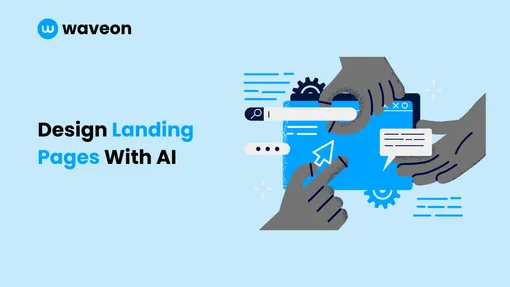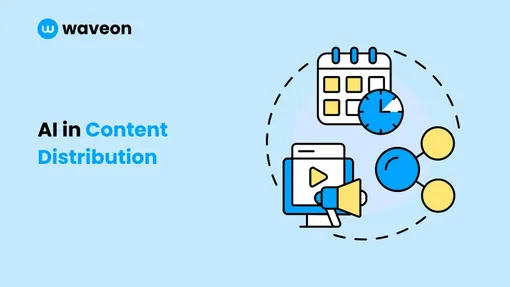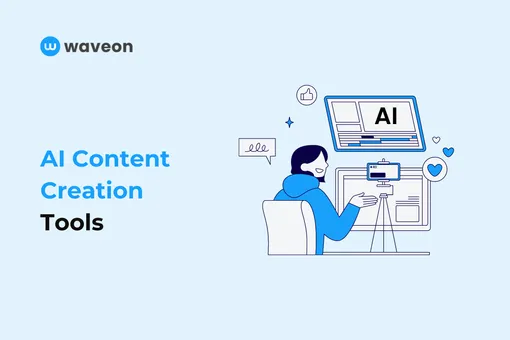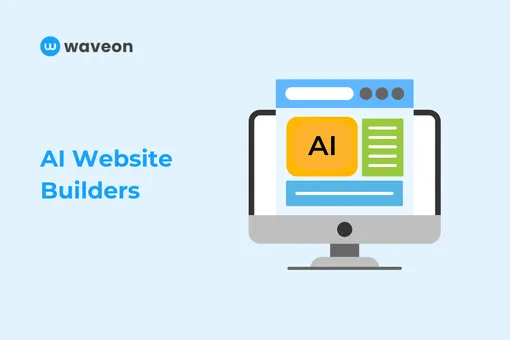Marketing
8 Best Fonts for Email Newsletters in 2024 [Email-safe + Professional]
Ekta Swarnkar
12/13/2023
0 min read
TABLE OF CONTENTS

While choosing fonts for newsletters, most business owners make the mistake of picking fancy custom fonts to try and stand out from the competition.
Yes, premium fonts are a great way to distinguish themselves, but they don’t realize that it poses a big problem without them knowing.
What?
Not all email clients support custom fonts, so it's very much possible that your subscribers won’t see the fonts you selected.
Let me give an example.
Suppose you designed your newsletter header, choosing Loubag and Nourd custom fonts:

Unfortunately, these fonts are not supported by your subscriber’s email clients. So, instead of your designed version, they’ll see this:

Not a bit close to what you created, right? The problem is poor designs can lead to low CTRs.
But there’s a bigger one — you can’t identify that fonts are the real issue because, on your end, you see a perfectly designed newsletter.
To make sure this doesn’t happen to you, you must choose your newsletter fonts carefully.
Don’t worry, though. I’ve done the research for you — this post lists the eight best fonts for email newsletters that you can use.
Let’s start with figuring out which fonts are safe for your newsletter.
What are email-safe fonts?
Email-safe fonts are pre-installed on most email clients, including computers, mobiles, and tablets. That means these fonts are universally visible to everyone, which also makes them commonly used.
So, if you’ve chosen an email-safe font as your default, your recipients will see them correctly, no matter their email client.
For example, Ariel is an email-safe font that is pretty common on many platforms:

Pros of using email-safe fonts
Since email-safe fonts are pre-installed on most devices, you’ll get high deliverability for your newsletters.
You won’t need to install additional codes to make sure these fonts load correctly.
Email-safe fonts load faster, which gives you better CTRs and open rates.
Cons of using email-safe fonts
These fonts are commonly used, so you can’t stand out from the competition.
You’ll get limited options to brand your newsletter.
Their plain outlook can result in an uninterested audience.
What are custom fonts?
Custom or non-system fonts are not pre-installed on your computer, mobile, or tablet. To use them, you need to download and install them properly.
This means if your subscribers don’t have your newsletter font installed on their devices, the font won’t display correctly.
Montserrat is a popular custom font:

Pros of using custom fonts
You can brand your newsletter easily by choosing from various custom fonts.
Your newsletter will stand out, giving it a unique look and feel.
Choosing a custom font that matches your brand logo and website design will help you build a universal brand.
Cons of using custom fonts
These fonts may not load correctly on all your recipients' devices as they’re not pre-installed.
These fonts take extra time to display, which can increase load time.
You need to install these fonts as custom codes.
Email-safe or custom font: which one should you choose?
Both email-safe and custom fonts have pros and cons, so which one you should choose depends on your priorities.
Choose an email-safe font if you’re not concerned about branding and want many people to open your emails.
Custom fonts are right for you if you want to prioritize building a professional brand.
If you choose an email-safe font, you don’t have to worry about many things like email client compatibility and deliverability. You can focus on creating high-quality content.
But if you choose a custom font, have an email-safe fallback font as a backup option. This way, if your custom font doesn’t load for some recipients, the backup font will load, and the content will display properly.
Our recommendation: You should go with an email-safe font. When you’re just getting started, you have many things to worry about, and choosing a simple font will check off one item from the list.
Email-safe fonts are also perfect for those who don’t want to get into code. Choose custom fonts only if you’re confident in your coding skills or can get external help.
8 best fonts for newsletters that load properly
We recommend these eight good fonts for newsletters that load properly so you don’t have to worry about slowing down your newsletters:
1. Ariel
Ariel is a commonly used sans-serif font that you can use in your newsletters. It’s clean, simple, and has a highly readable appearance. Although it’s common, if used with proper branding, you can make your newsletters stand out.
For example, Semrush pairs brand colors and headings with Ariel font to make their newsletters unique, modern, and appealing:

2. Georgia
Georgia is a beautiful serif typeface, giving the readers an elegant and old-style impression. It’s best suited as a body font but can also be used for headings if you want to maintain consistency.
Here’s an example of heading and body content using Georgia font:

3. Courier Prime
Courier Prime is a typewriter font with a mix of serif you can find on Google Fonts. It doesn’t look modern or stylish, so it’s a good choice if you’d like to give your newsletter an old-style typewriter feel.

4. Helvetica
Helvetica is a sans serif typeface font widely used to add stand-out effects in headlines, titles, and brand names. This font is inconsistent in spacing, so it’s only recommended for title tags.

5. Tahoma
Tahoma is Microsoft’s newly introduced sans-serif font. It has a unique, bold texture, which makes it perfect even for small-sized text. When bold is used correctly, Tahoma, as a combination of heading and body text, looks like a good fit for emails.

6. Trebuchet MS
Trebuchet MS is another sans-serif font designed for Microsoft. It’s closely similar to Tahoma with slightly bold characters, making it a fit for small-sized text, like emails.

7. Verdana
Verdana is a Microsoft font, helping you keep readers longer to read your content. Serif fonts force you to stare at the text longer, which can increase eye strain. But Verdana, as a sans-serif font, makes a suitable choice for screen readers.

8. Open Sans
Open Sans is a humanist sans-serif font and my favorite. I like how it makes the text look simple and modern and focuses readers on reading. With proper spacing, it gives an open feel without appearing crowded.

Decided which font will you use in your newsletter?
If not already, take your time and properly analyze each font before finalizing one. Fonts will stick with your newsletter for a long and become its branding, so you must carefully decide.
Don’t choose more than two fonts, ideally one for heading and one for text. Too many fonts can make your newsletter appear messy and irritate readers.
When you can’t make the decision, I have two things to say to you:
Keeping things simple is the best way, especially when you’re starting.
Open Sans is my favorite font and has always been a great choice.













